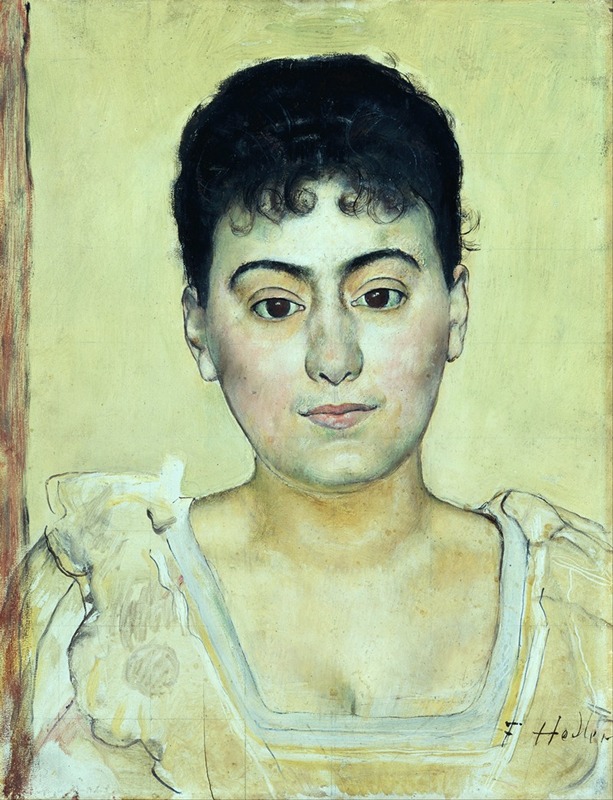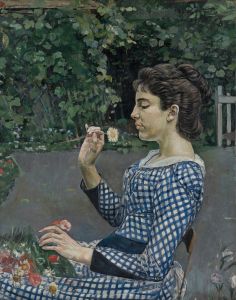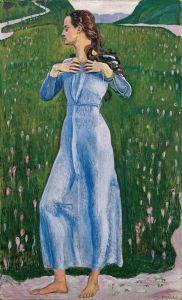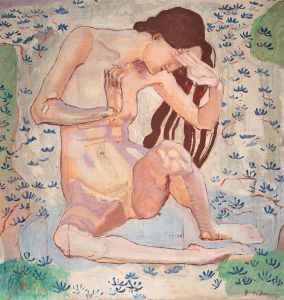
Portrait of Madame de R.
A hand-painted replica of Ferdinand Hodler’s masterpiece Portrait of Madame de R., meticulously crafted by professional artists to capture the true essence of the original. Each piece is created with museum-quality canvas and rare mineral pigments, carefully painted by experienced artists with delicate brushstrokes and rich, layered colors to perfectly recreate the texture of the original artwork. Unlike machine-printed reproductions, this hand-painted version brings the painting to life, infused with the artist’s emotions and skill in every stroke. Whether for personal collection or home decoration, it instantly elevates the artistic atmosphere of any space.
Ferdinand Hodler, a prominent Swiss painter, is known for his significant contributions to the Symbolist and Art Nouveau movements. One of his notable works is the "Portrait of Madame de R.," which exemplifies his distinctive style and approach to portraiture.
Ferdinand Hodler was born on March 14, 1853, in Bern, Switzerland. He developed an interest in art at a young age and pursued formal training in painting. Over the years, Hodler's work evolved, and he became known for his unique style characterized by bold lines, rhythmic compositions, and a focus on emotional expression. His work often explored themes of life, death, and the human condition, which resonated with the Symbolist movement of the late 19th and early 20th centuries.
The "Portrait of Madame de R." is a testament to Hodler's skill in capturing the essence of his subjects. While specific details about Madame de R. are scarce, the portrait reflects Hodler's ability to convey personality and emotion through his art. The painting is noted for its meticulous attention to detail and the use of color to create depth and dimension. Hodler's portraits often feature a serene and contemplative quality, inviting viewers to engage with the subject on a deeper level.
Hodler's approach to portraiture was influenced by his belief in "parallelism," a concept he developed that emphasized symmetry and repetition in art. This principle is evident in the "Portrait of Madame de R.," where the composition is carefully balanced, and the subject is presented with a sense of harmony and order. Hodler's use of parallelism aimed to evoke a sense of universality and timelessness, qualities that are apparent in this portrait.
Throughout his career, Hodler received numerous accolades and his work was exhibited widely across Europe. He became one of Switzerland's most celebrated artists, and his influence extended beyond his home country. Hodler's portraits, including the "Portrait of Madame de R.," are appreciated for their psychological depth and the artist's ability to capture the inner life of his subjects.
In addition to his portraiture, Hodler is also known for his landscapes and allegorical paintings. His work often reflects a deep connection to nature and a philosophical exploration of human existence. Hodler's legacy continues to be celebrated in the art world, and his paintings are held in high regard by collectors and institutions alike.
The "Portrait of Madame de R." remains an important piece within Hodler's oeuvre, showcasing his mastery of the portrait genre and his commitment to exploring the complexities of human emotion and identity. While the specifics of Madame de R.'s identity may not be well-documented, the portrait itself stands as a powerful representation of Hodler's artistic vision and his contribution to the development of modern art.


















